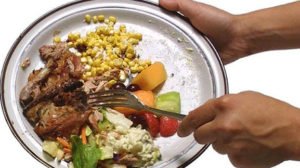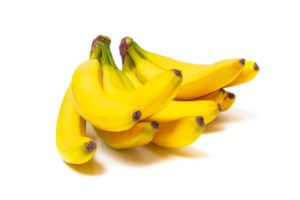
Article Contents
Food is wasted along the whole chain – from the farm to our table and we’ve been hearing about it in the last decade. From TED Talks, alarming news stories and from those environmentally conscious neighbors with a compost next door. Everyone throws away food, we are all aware of it, yet an easy to use, all-in-one tools to helps us reduce food waste were not available until recently.
Such a tool, we dare to say, is our app, CozZo. The insight behind it is simple – to provide each household with an accessible instrument for smart shopping and realistic food tracking, an effective weapon in our fight with food waste. Chefs and restaurant owners have long been using all kinds of digital mechanisms to reduce food waste, now it’s time for us as household managers to do the same.
We identified the main reasons why we all throw away food at home by doing a detailed investigation of the whole consumer journey. Then we equipped CozZo with as many features as necessary to help you avoid each of the six traps that could lead to food waste.
1. We misjudge how much we need to buy when planning for our grocery shopping.

Every house has UFOs – Unidentified Frozen Objects at the bottom of the freezer.
Every waste-free guidebook starts with the top of mind advice “make a list and stick to it”. That is absolutely a must, we agree.
But it skips a really important first step before we come to the list. We cannot make a precise to-buy note if we don’t know the exact amount of groceries and essentials that we already have. Truthfully, most of the time we don’t know all the food that is stored in our fridges, freezers and pantries. Let alone how long it has been there and when it is going to expire.
Our solution: We found there are multiple apps to help you make a shopping list, as well as general-purpose lists tools. But there was none that combined those two for you. So in CozZo, we paired your complete searchable household inventory with a smart shopping list.
As you can guess, we don’t know what is currently stocked in your home, but we created a fun flashcard wizard to help you start with minimum effort. Or you can just fill it “on the go” by crossing off items from your shopping list. Once you’ve done it, it will be yours forever – CozZo has all the controls to let you keep it up to date with minimal effort.
2. We discard food because it is passed its ‘best-before’ date. But do we have to?

National food regulation agencies enforce food producers to label their products so that customers are informed about the origin, content and qualities of the stuff they buy. And that’s the way it should be, there’s no questioning about the necessity of regulations.
But there is enough evidence that some dates are misunderstood, resulting in food that end in the bin, because “sell by” or “best-before” date has passed.
What are these “best before” dates anyway?
They are manufacturers’ advisory time frames indicating an estimate for how long the product will be at its highest quality at the “typical” storage conditions. Except for very few food types, labeled with “use by” stickers, those dates do not mean that the product is hazardous for your health pass this time. If you have a modern refrigerator and items are stored properly, your food will be fresh for much longer than the “best before” date.
Our solution: CozZo shelf life AI suggests a realistic expiry date for the optimal storage place – your fridge, pantry or freezer. Our expiry tracking approach is based on labeling, recommended by Natural Resources Defense Council (NRDC) – “Use/Best By“. It works like that: each product in CozZo has a ‘Use/Best Within’ shelf life; this period is used to automatically calculate the “Use/Best By” date when the food is added to the home inventory. Naturally, you can enter the printed date or update the expiry for any product in CozZo inventory.
CozZo is also super-precise in tracking and reporting on the status of your groceries. If the food is highly perishable, you will get a strict reminder and the product will be red-flagged. For all other foods, whose flavour might be slightly lost with time but are absolutely safe to eat you’ll get a gentle reminder and a green-flagged display.
To help you perfect your shopping routines and reduce food waste, the app checks your home inventory several times in a day and sends to your phone home screen reminders for products that are about to expire.
3. Food ends up in the bin because we are too optimistic about our cooking plans.

Cooking too much leads to discarded leftovers
If the first principle of smart shopping is ‘plan ahead’, the second one is ‘don’t plan too much’. This is extremely relevant for those of us who prefer one big weekly shopping rather than going to the deli 3-4 times a week.
When we go to the store with the good intention to secure the meal plans for at least 5 days ahead, we always go for the optimistic prognosis. We make sure we buy products for 5 days of home-made dinner, plus lunch boxes, snacks for the office, etc.
Then we go out one evening, the next day someone has a birthday in the office. There you go, you have 25% more food than needed, with a likelihood that 100% of it will go to the bin.
Our solution: Waste-free kitchen guidebooks say that you should always plan a lazy evening or two. CozZo helps you do it the easy way. You just go through your “At Home” list while still at the office and think of what you can do with what’s available. This saves you time as well.
When you know that you have everything for your salad but mozzarella, you go to the deli just for mozzarella. Otherwise, you will wander around the store for ‘”something for dinner”. And you will leave 20 minutes later with a full cart of unplanned grocery shopping.
4. We buy more because supermarkets seduce us with “buy 3 for a price of 2” promotions.

Buying a lot means carrying a lot
Multiple surveys prove that buying perishable goods in bulk eventually leads to more food waste. If you eat a yogurt a day, buy a six-pack. But if you are eating one every sometimes, buy one only. Or two.
Consider carefully the “six at the price of four” label. Buying food in large containers or multiple packs has more side-effects than food waste. It means you have to go shopping with your car, you’ll need more storage space. And you will eat (mindlessly) more than you think.
Our solution: The third main feature of our app, apart from the home inventory and the shopping list, is its Journal. For each product, you can say whether you used it all, or how much of it you were not able to eat in time.
So next time you put six yogurts on your shopping list, the app will remind you that last week 2 of those were thrown away. We assume this will serve as a stopper for impulsive buying of larger quantities of food than you can actually eat.
5. We have so much storage space and so little time for regular checks on all stocked food.
 In 1980, US refrigerators held an average of 19.6 cubic feet. In 2012, that number was 22.5. We’re able to store more food in our homes than ever before. Big pantries, huge fridges, stand-alone freezers are filled to the brim to meet each and every preference.
In 1980, US refrigerators held an average of 19.6 cubic feet. In 2012, that number was 22.5. We’re able to store more food in our homes than ever before. Big pantries, huge fridges, stand-alone freezers are filled to the brim to meet each and every preference.
As a result, products are pushed to the unreachable back and stay in cupboards and fridges until they spoil. We hope that you’ll agree with us that nowadays no one has the time to do daily kitchen inventory checks and memorize expiry dates.
Our solution: With CozZo, most of the updates in your digital food catalog happen as you plan meals and do grocery shopping. Our “days to go” indicator will tell you what food you need to use first or how much time has passed since “use by” date. On top of that, home screen reminders will bring to your attention to food that is about to expire.
Health-wise, we encourage you to increase the share of fresh and unprocessed foods in your basket. When you have a reliable tool for keeping tabs on them, you can be sure that they won’t end in the bin.
6. Miscommunication, resulting in double purchases.

One of them would probably end up in the bin
Remember the day you bought bananas and your husband came home with…bananas. That day was not long ago, probably. In our super-connected times, some may argue that this is a thing of the past, but it still happens. A lot.
Perhaps we do it, without considering the possibility of wasting the food, thus we would not bother calling or texting to coordinate with other shoppers in the household.
So one of the two bunches of bananas may end up in the bin. Unfortunately.
CozZo solution: Talking to your partner through an app is not the best idea in general, but when it comes to “what to buy” instructions, it is great. CozZo Household Account allows multiple users to have access to lists and inventories.
When one buys or adds something to the lists, the others get notified. And which is even better – now he knows exactly what kind of mascarpone you need for that cheese cake you are making. Win-win all the way, isn’t it?
With CozZo we want to provide not only an advanced mobile technology to reduce food waste but also to raise food-waste awareness. We strive to educate, motivate and develop a community of smart shoppers who care for the environment. Here are some useful tips on how to store your groceries and keep them as fresh as possible for a longer period of time.
When you start using the CozZo app and have a regular overview of what foods you throw away most often, you can adjust the way you store them. Here’s a full list of guidelines for the most common products in our kitchens. We hope we’ve been helpful.


Comments are closed, but trackbacks and pingbacks are open.